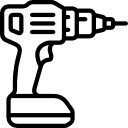- اتو لوله سبز
- اره پروفیل بر
- اره عمودبر (اره چکشی)
- اره فارسی بر
- اره گرد (اره دیسکی)
- اره مویی
- اره میزی
- اره نواری (گوشت بری)
- اره همه کاره (افقی بر)
- ابزار چندکاره
- بالابر برقی
- بتن ساب و موزایک ساب
- بکس برقی
- پیچگوشتی برقی
- پیستوله برقی
- بیسکویت زن
- چکش تخریب
- دمنده/مکنده (بلوور)
- دریل بتن کن
- دریل ساده (سرکج)
- دریل ستونی
- دریل ضربه ای/چکشی
- دریل مغناطیسی (مگنتی)
- دریل نمونه بردار (کرگیر)
- دستگاه جوش
- رنده و فرز نجاری
- سنباده برقی
- سشوار صنعتی
- سنگ دوطرفه (چرخ سنباده)
- سنگ و پولیش
- شیارزن و مرمربر
- فرز مینیاتوری
- فرز انگشتی
- میخکوب و منگنه کوب
- مینی سنگ
Complete Guide to Successfully Commissioning a Ventilation System Step by Step
Commissioning a ventilation system is a critical aspect of ensuring that indoor air quality is optimized and energy usage is minimized. This process involves a series of methodical steps that validate the installation and performance of the system, guaranteeing its alignment with design specifications. Each phase demands careful attention to detail to achieve optimal results.
At the heart of this process lies the final inspection, where every component of the system is meticulously reviewed. This stage is crucial for identifying any discrepancies or areas that require adjustment before the system is deemed fully operational. Following this, a thorough performance evaluation is conducted to assess how well the system functions under real-world conditions, ensuring that it meets the intended performance criteria.
By adhering to a clear and defined commissioning protocol, facility managers can not only enhance the air quality but also contribute to the longevity and reliability of their ventilation systems.
Pre-Commissioning Checklist: Essential Steps Before Starting
Implementing a ventilation system requires careful planning and execution to ensure optimal functionality. Before commencing the commissioning phase, several key steps need to be addressed:
-
Client Briefing: Engage with the client to confirm project requirements, objectives, and expectations. This interaction will clarify specific needs and help identify any unique project elements.
-
Performance Evaluation: Establish baseline performance metrics for the ventilation system. This includes determining necessary airflow rates, pressure differentials, and filtration efficiency to measure against during commissioning.
-
Site Pre-Checks: Conduct detailed inspections of the installation site. Verify the integrity of ductwork, check for proper insulation, and ensure all components are installed according to specifications.
-
System Documentation Review: Collect and review all relevant documentation from manufacturers and project plans. Ensure that installation manuals, schematics, and compliance certificates are readily accessible.
-
Safety Protocols: Confirm that all safety measures are in place to protect workers during the commissioning process. This includes assessing emergency shut-off systems and ensuring all personnel are aware of safety procedures.
-
Calibration of Instruments: Ensure that all measurement tools and instruments are calibrated correctly for accurate data collection during commissioning activities.
Completing these pre-commissioning steps will lay a solid foundation for an effective and organized commissioning process. Proper execution at this stage can significantly enhance overall system performance and client satisfaction.
Performance Testing: Verifying System Functionality and Compliance
After completing the commissioning process, performance testing plays a critical role in validating the ventilation system’s functionality and adherence to project specifications. This phase encompasses various methodologies aimed at ensuring the system operates as intended.
The process typically begins with pre-checks to confirm that all components are installed correctly and ready for evaluation. These checks set the foundation for an accurate assessment. Following this, the airflow test is conducted to measure the volume of air moving through the system. Achieving the desired airflow rates is pivotal for optimal performance.
During testing, parameter adjustments may be necessary to fine-tune the system. This can involve fan calibration to ensure that the fans are operating at the correct speeds to produce the required airflow. Any variances detected will be noted for defect fixing, addressing issues that could impede efficiency.
Performance evaluation includes assessing other critical factors such as noise levels, temperature control, and overall energy consumption. A thorough approach ensures compliance with industry standards and client specifications. The final step involves a final inspection, where results from various tests are compiled to confirm that the system meets all operational and regulatory requirements.
Each step in performance testing contributes to a robust verification process, paving the way for a fully functional ventilation system. For more information on ventilation commissioning, visit https://mjrhvac.com/.
Documentation and Handover: Ensuring Complete System Records
Thorough documentation is critical during the commissioning of a ventilation system. This process involves recording all relevant data, including performance metrics and equipment settings. It guarantees that future maintenance and system adjustments can be executed smoothly.
One of the key components of this documentation is the final inspection report, which summarizes all testing outcomes and identifies any discrepancies. This report should detail parameter adjustments made throughout the commissioning phase, providing a clear picture of the system’s operational baseline.
Pressure testing results must also be documented to validate the system’s integrity. These findings serve as a benchmark for future evaluations, ensuring that any deviations from performance can be tracked over time.
Client briefing sessions are vital for sharing operational manuals and system specifications. These interactions ensure that the client is well-informed about the system’s functionality and maintenance requirements.
The documentation process includes fan calibration and airflow test results, which are critical for confirming that all components operate seamlessly within the designed specifications. Proper records of these tests allow the client to understand the system’s performance and make informed decisions for any necessary adjustments in the future.
When all documents are compiled and reviewed, a formal handover can take place. This final step signifies the completion of commissioning, ensuring that all parties are aligned and that the ventilation system is ready for active use.




